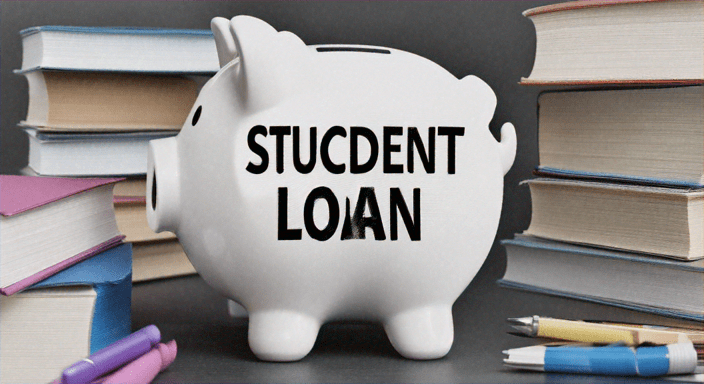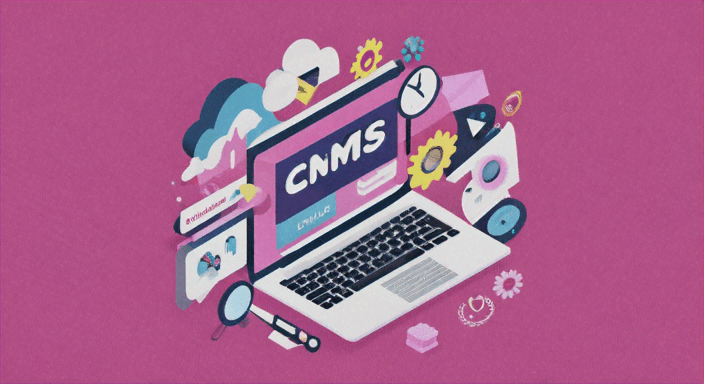Although student loans can seem overwhelming, employing the right strategies can transform them from a long-term burden into a valuable asset. This guide aims to demonstrate effective student loan management, converting financial stress into an avenue for growth.

Grasping the Intricacies of Student Loans and Their Consequences
Defining Student Loans
Student loans are funds borrowed to finance education, which must be repaid with interest. In the United States, student loans are primarily categorized into two types: federal loans, which are government-funded, and private loans, which are issued by private lenders. Federal loans usually come with lower interest rates and more adaptable repayment options.
Unveiling the True Cost of Student Loans
The actual cost of a student loan surpasses the initial borrowed amount. Factors such as interest rates, fees, and repayment terms can significantly increase the total amount paid. For instance, a $30,000 loan with a 4.5% interest rate over a decade will end up costing approximately $37,311. Understanding these costs is essential for making well-informed borrowing decisions.
The Influence of Student Loans on Your Financial Well-being
Student loans affect your credit score, debt-to-income ratio, and future borrowing capacity. While high debt can restrict financial freedom, prudent loan management can enhance credit and contribute to long-term financial stability.
Approaches to Manage Your Student Loans
Selecting the Optimal Student Loans in 2024
Identifying the best student loans necessitates a thorough evaluation of both federal and private options. Federal loans, including Direct Subsidized and Unsubsidized Loans, remain popular due to their fixed interest rates and flexible repayment terms. Private loans from lenders such as SoFi, College Ave, and Earnest can address remaining financial gaps but come with varying terms.
In 2024, it is also vital to consider current market conditions and economic factors that could influence interest rates. For example, inflation may lead to higher interest rates, thereby increasing the overall cost of borrowing. Staying informed about these trends can assist you in choosing the most cost-effective loan options.
Federal vs. Private Loans: Distinguishing the Differences
Federal loans typically offer fixed interest rates, income-driven repayment plans, and loan forgiveness options, making them generally preferable. Conversely, private loans may provide lower interest rates for creditworthy borrowers but lack federal protections. For 2024, federal loans for undergraduates have an interest rate of around 5.50%, while private loans can range from 3% to over 12%, depending on creditworthiness and lender.
Refinancing and Consolidation: Weighing the Advantages and Disadvantages
Refinancing your student loans can reduce your interest rate, resulting in long-term savings. However, refinancing federal loans with a private lender means forfeiting benefits like income-driven repayment plans and loan forgiveness. Consolidation merges multiple federal loans into one, simplifying payments but potentially extending the repayment period and increasing the total interest paid.
It is also advantageous to explore advanced repayment strategies, such as making extra payments or applying a lump sum towards the principal, which can significantly reduce the total interest paid over the life of the loan. Another effective approach is opting for bi-weekly payments instead of monthly, which can expedite loan repayment and further reduce interest costs.
Income-Driven Repayment Plans
If high monthly payments pose a challenge, income-driven repayment (IDR) plans can adjust payments based on your income and family size. Plans like PAYE (Pay As You Earn) and REPAYE (Revised Pay As You Earn) can lower payments to as little as 10% of your discretionary income, with the remaining balance forgiven after 20-25 years of payments.
Public Service Loan Forgiveness (PSLF) and Other Forgiveness Programs
PSLF is available to borrowers who work full-time in qualifying public service jobs and make 120 qualifying payments under a qualifying repayment plan. This program can lead to significant savings, but strict requirements mean it’s crucial to stay informed and ensure every payment counts. Other programs, such as Teacher Loan Forgiveness, offer partial forgiveness for those in specific fields.
Additionally, consider state-specific and employer-sponsored loan forgiveness programs that can supplement federal forgiveness. However, keep an eye on potential changes in legislation that might affect these programs, as government policies on loan forgiveness can evolve over time.
Transforming Loans into an Investment in Your Future
Harnessing Education for Career Advancement
Your education is an investment in your future earning potential. According to the U.S. Bureau of Labor Statistics, graduates with a bachelor’s degree earn about 67% more than those with only a high school diploma. By strategically using your degree to advance in your career, you can maximize your return on this investment, ultimately making loan payments more manageable.
Cultivating Financial Literacy During Repayment
Repaying student loans provides an excellent opportunity to develop financial literacy. Learning to budget, manage debt, and save can establish the foundation for long-term financial health. Numerous resources, such as online courses, apps, and financial advisors, can help you enhance your financial skills.
Intelligent Budgeting: Balancing Loan Payments with Savings and Investments
Creating a balanced budget that accounts for loan payments, savings, and investments is crucial. For instance, the 50/30/20 rule suggests allocating 50% of your income to needs, 30% to wants, and 20% to savings and debt repayment. This approach ensures that you’re not only paying off your debt but also building a financial cushion.
Incorporating advanced budgeting strategies, like prioritizing extra payments or using windfalls (like tax refunds) for loan repayment, can help accelerate debt reduction. Additionally, balancing student loan payments with retirement savings and investments is key for long-term financial stability, especially for those closer to retirement age.
| Budget Category | Percentage of Income | Example Monthly Budget ($3,000 Income) |
| Needs (e.g., rent, food) | 50% | $1,500 |
| Wants (e.g., entertainment) | 30% | $900 |
| Savings/Debt Repayment | 20% | $600 |
Utilizing Grants and Financial Aid Post-Graduation
Even after graduation, there are opportunities to reduce your financial burden through grants and aid. Many states offer loan repayment assistance programs (LRAPs) for graduates working in high-need professions, such as healthcare or education. Staying informed about these opportunities can help you reduce your loan balance and improve your financial outlook.
It’s also crucial to manage loans during unforeseen financial difficulties, such as unemployment or underemployment. Understanding options like deferment, forbearance, or adjustments to income-driven repayment plans can prevent default and help you stay on track. Effective communication with your loan servicer is essential in navigating these challenges.
Identifying the Best Student Loans in the U.S.
Federal Student Loans
Federal loans should be your initial choice when searching for the best financing options. They often offer lower interest rates and more favorable repayment terms than private loans. For the 2024-2025 school year, Direct Subsidized and Unsubsidized Loans for undergraduates have an interest rate of approximately 5.50%, while PLUS loans carry an interest rate around 8.05%. These rates are set annually, so it’s important to check the latest information.
Private Student Loans
Private loans can address any remaining financial gaps after exhausting federal options. However, they come with different terms and fewer borrower protections, so it’s crucial to shop around. Lenders like SoFi, College Ave, and Earnest offer competitive rates, but your credit score and income will play significant roles in determining the interest rate. Use comparison tools like Credible or LendingTree to evaluate offers from multiple lenders, paying attention to the APR, which includes both the interest rate and fees.
Repayment Strategies
Choosing the right repayment strategy can significantly impact the total cost of your loan. Federal loans offer several income-driven repayment plans, and programs like PSLF can forgive a portion of your debt if you work in qualifying public service roles. Refinancing might be beneficial if you can secure a lower interest rate, but be cautious as it could mean losing federal protections. Planning your repayment from the start and budgeting accordingly will help you manage your debt more effectively.
Remember, understanding interest rate trends and how they might shift in the future is critical when considering refinancing or consolidation options. This foresight can help you lock in the most favorable rates and terms.
Real-Life Examples of Success
Case Studies: Graduates Who Turned Debt into Opportunity
Consider Alex, a public school teacher who utilized the PSLF program to forgive $40,000 in student debt after ten years of service. Or Jane, who refinanced her private loans at a lower rate, saving over $15,000 in interest. These examples show how strategic loan management can lead to financial success.
Lessons Learned from Student Loan Mistakes
Avoid common pitfalls, such as ignoring federal benefits when refinancing, or neglecting to recertify income for IDR plans. For example, one borrower failed to keep up with IDR recertification, resulting in higher monthly payments. Learning from these mistakes can help you navigate your own repayment journey more effectively.
Frequently Asked Questions
-
How Can I Find the Best Student Loans in 2024? Research federal loan options first, as they typically offer better terms and protections. Compare private lenders for competitive rates, using tools like Credible or LendingTree.
-
What Are the Benefits of Refinancing My Student Loans? Refinancing can lower your interest rate and reduce monthly payments, but it may also result in the loss of federal benefits. Consider your financial situation before making a decision.
Conclusion
Student loans don’t have to be a lifelong burden. With careful planning, smart financial decisions, and the right resources, you can turn your student loans into a stepping stone for a secure and prosperous future. Use the strategies in this guide to transform your loans into an investment in your success.





